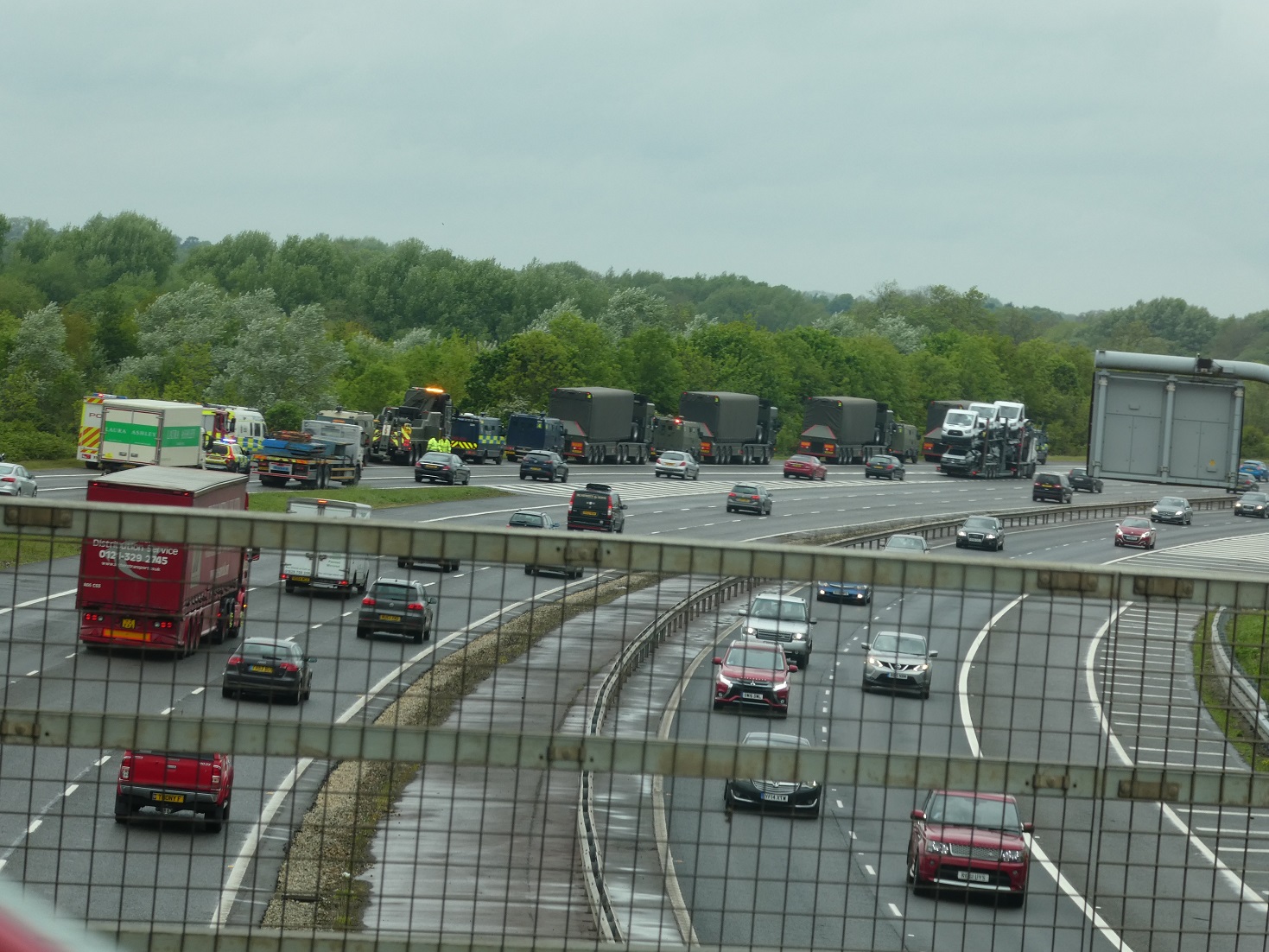Ministry of Defence (MoD) figures released in response to a Freedom of Information (FOI) request suggest problems in nuclear convoys became more common. The FOI release summarises 40 incidents which occurred between August 2016 and August 2019. There were 2 incidents in the last 5 months of 2016, compared to 15 incidents in the first 8 months of 2019, meaning that the average number of monthly incidents was more than four times higher by 2019.
The original FOI request was for incidents which occurred in Scotland, but as the MOD’s record of incidents covers the whole of the UK the data provided does not differentiate between incidents in Scotland and elsewhere. The data includes both nuclear weapon convoys and convoys carrying special nuclear material, such as submarine reactor fuel.
The incidents are listed into two categories. Of the 40 incidents, 30 are listed as engineering incidents, which are problems with the convoy vehicles themselves, including brake light failures, flat tyres, unexpected smoke or blue emergency lights being stuck on. The remaining 10 are listed as operational incidents, which generally involve external factors, such as high winds, congestion or a traffic collision. For both categories of incident, the average number of monthly incidents increased every year that the data covers.
None of the traffic collisions listed involved the Truck Cargo Heavy Duty (TCHD) vehicles which carry nuclear materials. Only one of the traffic collisions involved a convoy vehicle, in May 2019 when a police vehicle collided with a car, causing a “minor” delay to the convoy.
The incident descriptions are brief, but many of them record whether or not there was a delay to the convoy. These are often described as “minor”. In January 2019 a collision which did not involve the convoy caused congestion, and some of the convoy support vehicles were held up. A decision to “reconfigure” the convoy meant that the delays were only minor. Convoy support vehicles include a breakdown truck and mobile workshop. It is not clear from the description whether the decision to “reconfigure” meant that the convoy travelled without these vehicles, or for how long.
In May 2019 a serious accident caused serious congestion on both carriageways of the route and a rolling road block was set up by the convoy to hold back the traffic. This resulted in the convoy being delayed by an hour.
In May 2017 it is reported that an “air pipe had blown off in the cab” of one of the TCHD trucks. In January 2018 a convoy vehicle suffered a flat tyre and one lane of the road was closed while the convoy stopped and the tyre was changed.
In May 2019 a convoy vehicle that was not a TCHD experienced power loss and was forced to pull into a service station. It was assessed as being unsafe and was swapped with a spare vehicle.
The FOI release does not include any analysis of why incidents might be becoming more common. As documented in the NIS report ‘Playing With Fire: Nuclear Weapons Incidents and Accidents in the United Kingdom’ a pattern of increased previous incidents occurred when previous generations of carrier vehicles reached the end of their service life. The current Mercedes Actros tractor units only came into service in 2010.
Nuclear convoys usually consist of several carrier trucks, escorted by police vehicles, followed by support vehicles and military personnel on a coach.
